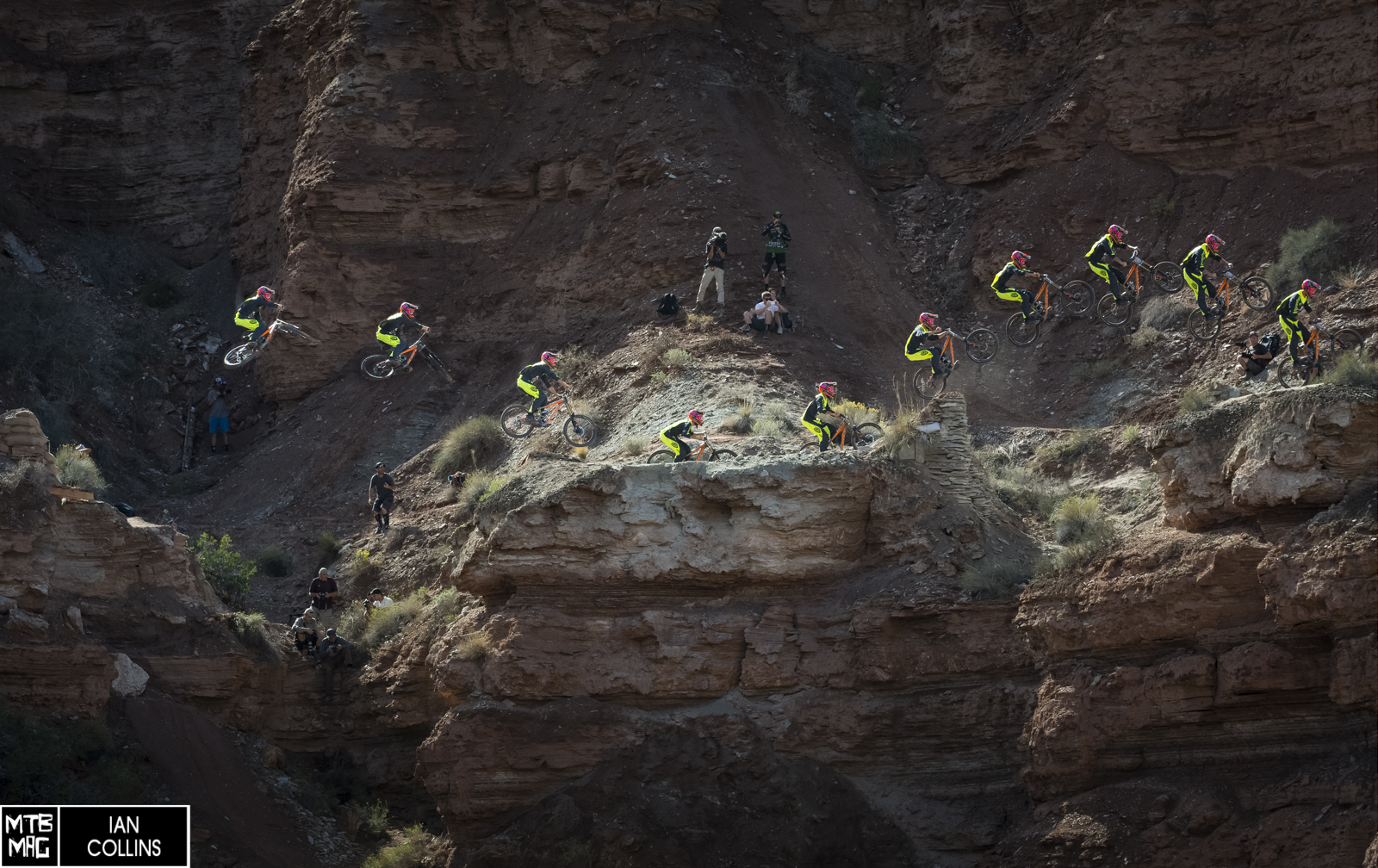[ad3]
When the HT guys dropped their latest T1 Enduro Race clipless pedal into our hands a few days before their official launch with a small side note that Jerome Clementz will be riding with them from the following week, we stopped what we were doing and paid attention. Knowing Jerome and his professionalism, products typically have to work pretty well for him to endorse them. So the first thing we did was go and mount them on our Enduro bike, then set to work riding them. Find out our first ride impressions and thoughts below.
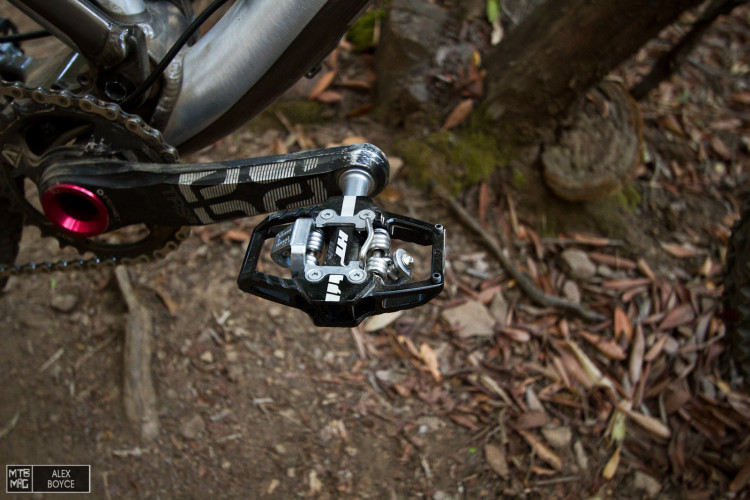
Looking interesting, with a mid sized cage and minimal pins it sits between a DH and XC size.
Specifications
– Pedal weight(pair) 368 g
– Cleat weight(pair) 64 g
– Size 68 x 83.5 x 16.8 mm
– Body material aluminum extruded / CNC machined
– Spindle CNC machined cr-moly
– Pedal bearings new EVO+ bearings system
– Cleat system X1/ X1F (HT exclusive system)
– Pins replaceable grip pins
– Options colours
– Price: € 119
First Impressions
We have had about a month on the T1 cro-mo axle version. The build quality of the pedals is excellent with around 100 grams saved over their DH X1 version that Aaron Gwin races on. The T1’s are competitively focused on Enduro. The pedal looks similar to a Shimano SPD pedal, but the HT has a CNC’d base and form plus their own cleat system.
The bearings feel smooth and are accessed with a hex bolt cap on the pedal end, servicing is therefore fairly straightforward. The pedal cage has two pins up front on each side of the pedal that are designed to add some grip when the foot comes into contact with the pedal body as the foot clips in. These pins are adjustable and can be removed if you so desire. Fitting cleats was a standard operation in the bottom of the shoe with all the spacers and bolts supplied, an optimum adjustment point could be found. When placing the cleats according to our previous pedal position we noticed that it was comfortable and a direct swap over. Spring tension is adjustable and one bolt controls the rear entry point on each side. The front entry point is linked to the rear of the opposite side of the pedal. We found that adjustment with a hex key was easy and we pretty much found a middle tension setting of the pedal to be about right for our riding style.
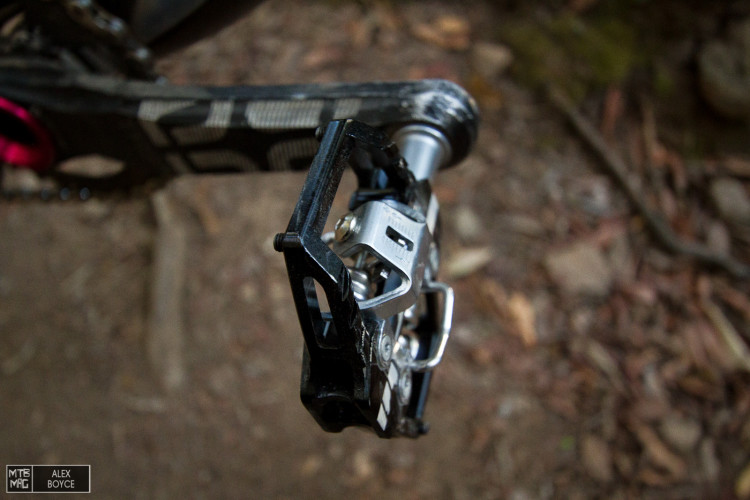
Rear cleat entry control.
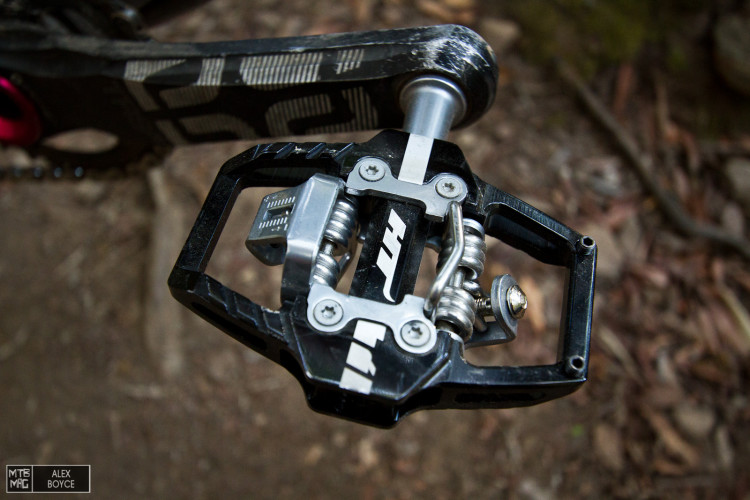
The pedal body up close, CNC surface and a simple yet effective spring system. Similar to Shimano style pedals.
On The Trail
Based on almost a month of riding we can say that entry and exit experience has been pretty flawless. Every time we have stamped downwards the pedals have engaged our foot and with the mid tension setting we have always been able to clip in. Entry compared to our previous (and excellent) Crank Brothers pedals has been reliable.
When riding Enduro trails especially in Punta Ala, it can be varied and finding ideal settings that suite technical and smooth sections can be hit and miss as maybe you need to be able to un-clip more easily in some spots than others depending on your riding style. However we felt that the mid tension setting was great, it allowed us to have a loose enough feeling with out over floating and un-clipping. This suited our foot out/down riding style. The float feeling is a bit more constricted compared to our Mallet DH pedals, however that is to be expected as we have gotten accustomed to the 25 degree cleat setting on the Crank Brother Pedal. The foot does feel on the pedal that it is well supported and free to move securely. We liked very much the two front pins, they gave added grip when we needed it, especially in wetter conditions on entry. When there is a build up of dirt entry continued to be reliable. We did not test in extreme mud yet, that experience will come as we go into the winter season.
When riding a technical trail the pedals felt that they gave us the support needed and freedom of movement that is required to not feel too bolted into the pedal. Some of our test trails have some nasty technical points where a quick exit then re-engagement is needed. Exiting was second nature in all of these points. Re-engaging was quick and in our case we felt we could just stamp down and we clicked straight in. Jumping was comfortable, at no point did we feel or experience a detachment if we yanked at the pedals trying to make them un-clip. All of our tests were about seeing how HT’s system plays out compared to other systems at the first experience. We are sure that feedback from their pro rider squad including Aaron Gwin has played an important part in their development. We did not crash with these pedals so we can’t comment at this point on their extreme force disengagement.
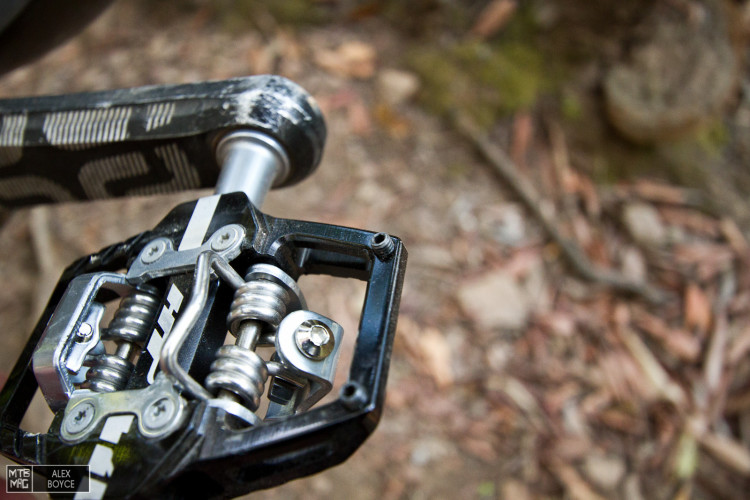
The front pins are an added bonus when it comes to finding the pedal and remaining in contact.
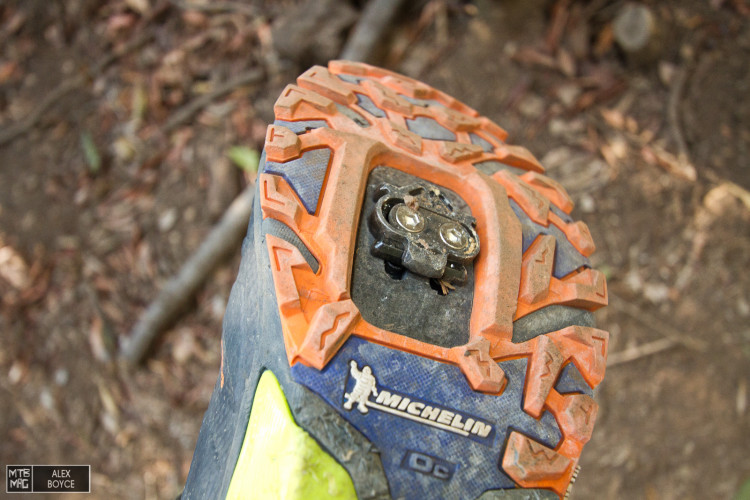
The cleat was easy to mount and adjust.
Conclusion
Riding corners, mashing uphill on short climbs at speed, downhill sections, we could see how the T1 Enduro Race pedal is a solid performer during our initial ride time and will be staying well and truly on our bike well into the winter months. They have a smooth feeling and we really liked the entry and exit control and float settings. Durability is hard to judge at this stage, we experienced zero problems so far. These units are available in a titanium and chromo versions, we tested the chromo versions and found the axles to be solid and bounce off any rocks etc with zero issues. The weight is in-line with what can be expected from a robust mid duty pedal.
Up until now we think the HT are worth considering especially if Enduro is your style. We look forward to seeing how they stack up now in some extreme mud and weather over time.
Test location: Punta Ala
HT Components
[ad12]



